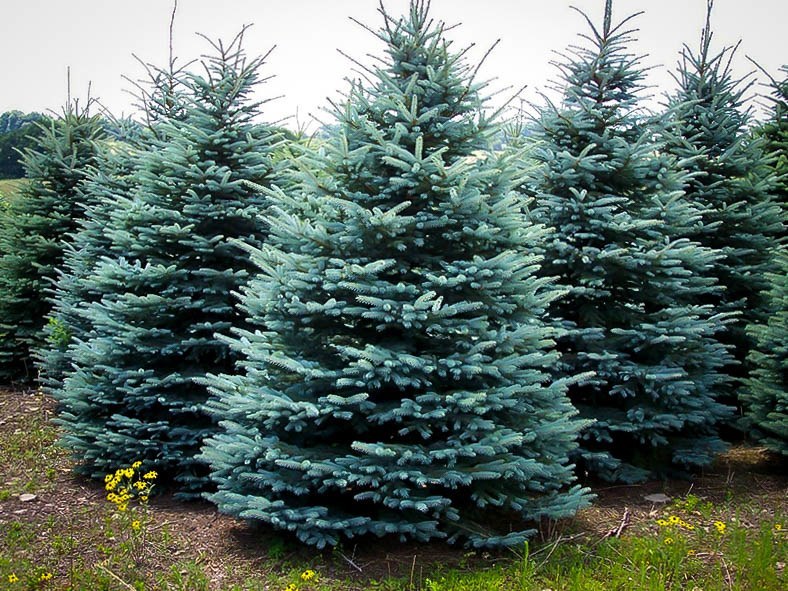Spruce (Picea)
Spruce trees produce essential oils that are extracted using steam distillation. There are different species of spruce trees that are used to extract essential oils for sale including, Black Spruce (Picea mariana), Norway Spruce ( Picea abies), Red Spruce (Picea rubens), Sitka Spruce (Picea sitchensis), and White Spruce (Picea glauca). We here at Petoskey and Pine use mainly Black, White, and Sitka Spruce. Black and White Spruce trees are found throughout the northern section of North America from the Great Lakes all the way up to the Arctic tree line.
Sitka Spruce is the largest of the world’s spruces and is one of the most prominent forest trees in stands along the northwest coast of North America. This coastal species is seldom found far from tidewater, where moist maritime air and summer fogs help to maintain humid conditions necessary for growth. Throughout most of its range from northern California to Alaska, Sitka spruce is associated with western hemlock (Tsuga heterophylla) in dense stands where growth rates are among the highest in North America.[1] We here at Petoskey and Pine reserve the use of Sitka spruce to our essential oil blends due to its rarity and expense.
Essential Oil Information: Spruce trees’ aroma is piney, woody, and fresh, with a touch of warm depth, Sitka Spruce contains a large percentage of β-myrcene. This chemical is known to help reduce pain and inflammation. Black and White spruce oil also contains β-myrcene but at lower percentages than Sitka. White and Black Spruce contain higher percentages of α-Pinene, β-Pinene, and Bornyl acetate. α-Pinene and β-Pinene are known to be anti-bacterial, anti-spasmodic, with anti-inflammatory properties. Bornyl acetate is analgesic and anti-inflammatory. These chemicals combined produce a great essential oil to help with cold sinus issue as well as cleaning the air from microbes.
Health Benefits: Spruce essential oils are good for muscle and joint issues, respiratory support, antibacterial action, and reducing inflammation. However, you need to really understand the chemical makeup of each individual spruce essential oil to understand how to make proper blends. Consult an aromatherapist for more information. We happen to have a certified scholar aromatherapist here at Petoskey and Pine. Shoot him an email, petoskeyandpine@gmail.com
Safety Considerations: Sitka Spruce has no known safety issues. White and Black spruce contain a higher amount of monoterpenes and these oils may oxidize quickly if left opened and in sunlight. As with all essential oils, Petoskey and Pine suggests you do not apply to your skin undiluted.
Reproductive Toxicity: The low reproductive toxicity of β-Pinene, α-Pinene, camphene, (+)-limonene and β-myrcene suggests that white spruce oil is not hazardous in pregnancy.[2]
Summary: Spruce essential oils are among some of our favorite pine/woodsy smelling oils. They offer a strong and sometimes sharp forest aroma while providing excellent inhalation qualities. They are a wonderful addition to diffuser blends and topical creams.
[1] https://www.srs.fs.usda.gov/pubs/misc/ag_654/volume_1/picea/sitchensis.htm
[2] Robert Tisserand and Rodney Young, (2014) Essential Oil Safety 2nd Edition, Page 432

